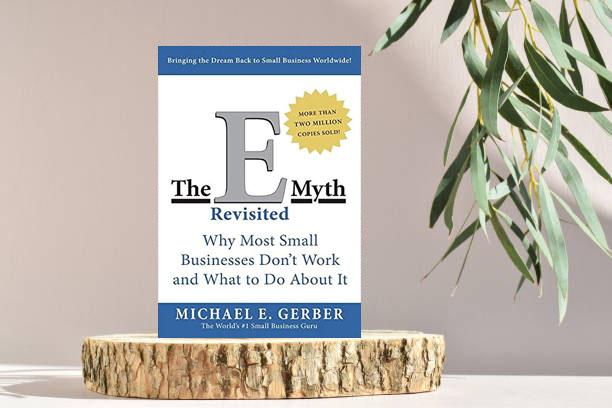Key Lessons from Real Entrepreneurs
Starting a small business is one of an entrepreneur’s boldest moves. It promises freedom, creativity, and the opportunity to build something meaningful. Yet, the reality is harsh: over 50% of small businesses fail within five years, and many close their doors much earlier. These aren’t just statistics — they’re stories of ambition, struggle, and sometimes, missteps that could have been avoided.
In this in-depth guide, we explore the real reasons small businesses fail and more importantly, how you can avoid becoming another cautionary tale.
1. Lack of Market Need
One of the most common and fatal mistakes is building a product or service that no one wants. This happens when founders fall in love with their idea but skip validating it with real potential customers.
Why did it lead to failure?
When there’s no apparent demand, you waste time, money, and energy building something that won’t sell. Businesses fail when the problem they solve isn’t urgent, painful, or valuable enough to customers.
Example 1:
Jason built a mobile app to help people track their book reading time. He assumed book lovers would want detailed analytics. After launch, very few people used it. Why? Most readers didn’t care about tracking time — they just wanted to enjoy reading. The app quietly faded away after burning thousands of dollars in development costs.
Example 2:
Linda opened a meal prep service offering ultra-healthy vegan meals in a rural town. She assumed everyone would jump on the health trend, but most locals preferred traditional home-cooked meals. Despite great branding and recipes, she closed within six months due to lack of customers.
Lesson:
Talk to potential customers before launching. Use surveys, interviews, and market research to identify real problems people are willing to pay to solve.

2. Poor Cash Flow Management
You can be profitable on paper and still run out of cash, and once the money dries up, it’s game over.
Why did it lead to failure?
Many businesses fail not because they weren’t earning, but because they didn’t manage their cash properly. Late payments, overspending, or ignoring upcoming bills can create a dangerous gap between income and expenses.
Example 1:
Sophia owned a boutique that had a fantastic holiday season. She made a hefty profit and reinvested it all into new stock. But she forgot to account for rent, utilities, and employee wages for the slower months. By February, she was broke.
Example 2:
Tom ran a small digital agency. He secured large contracts with big brands but failed to negotiate upfront payments. Clients paid 90 days later — by then, Tom had already spent the money. He couldn’t cover salaries, and his team walked away.
Lesson:
Create a cash flow forecast. Always have enough liquidity to cover 3–6 months of expenses. Businesses fail when they run out of cash even if they’re technically profitable.
3. Pricing Mistakes
Getting your pricing wrong can quietly destroy your business.
Why it leads to failure:
Price too low and you can’t cover costs. Price too high and customers might not buy. Many small businesses fail because they don’t understand how to price based on value, competition, and profitability.
Example 1:
Cynthia sold handmade candles. She priced them at $10, believing lower prices would attract more buyers. She sold out regularly but made barely enough to cover materials, let alone her time. After months of hard work with no returns, she gave up.
Example 2:
Derek launched an online course for $499, thinking a higher price meant more credibility. But he had no social proof, no testimonials, and no audience. The result? Zero sales.
Lesson:
Price based on value, not just cost. Test different pricing tiers, bundle offers, and consider psychological pricing strategies. Track margins closely — many businesses fail simply because they don’t make enough per sale to survive.

4. Ineffective Marketing
“If you build it, they will come” is a myth that kills businesses.
Why it leads to failure:
You might have the best product in the world, but if no one knows about it, it won’t sell. Poor marketing strategy or no strategy at all is a major reason small businesses fail.
Example 1:
Anita opened a charming vegan bakery with unique flavors and healthy ingredients. But she never advertised beyond her street. She didn’t use social media, didn’t collect emails, and didn’t run promotions. Within a year, she shut her doors.
Example 2:
Ryan built a time-saving productivity app. He focused entirely on development and skipped marketing. After launch, the app sat unnoticed in the app store. No traction, no downloads, no business.
Lesson:
Your product needs visibility. Build a marketing engine early: SEO, social media, content, partnerships, and email marketing. A great product alone is not enough.
5. Trying to Do Everything Alone
Many entrepreneurs are highly driven but too much solo hustle can lead to burnout and failure.
Why it leads to failure:
Business owners often try to wear every hat: creator, marketer, customer support, accountant. But lack of delegation leads to exhaustion, decision fatigue, and poor execution.
Example 1:
Michelle launched an online art store. She painted the artwork, managed social media, packed orders, and responded to emails alone. After a year of 16-hour days and no holidays, she shut down to protect her health.
Example 2:
Joe opened a restaurant but refused to hire a manager. He handled everything from food orders to customer service to finances. When he fell ill for two weeks, operations collapsed — and customers never returned.
Lesson:
Delegate early. Hire part-time help or outsource tasks. Burnout is real, and it’s a silent reason many businesses fail.
6. Failure to Adapt to Change
Businesses fail when they resist change in a rapidly evolving market. Failure often occurs due to ignoring customer feedback, failing to innovate, poor financial management, neglecting marketing, resisting new trends, or underestimating competition. Businesses that don’t adapt to market shifts and customer needs risk falling behind and becoming obsolete.
Why it leads to failure:
Whether it’s new technology, shifting customer preferences, or a global crisis, businesses must evolve. Those that stick to outdated models often disappear.
Example 1:
Elaine owned a DVD rental store and dismissed streaming as a passing trend. As Netflix and YouTube grew, her business became irrelevant.
Example 2:
Paul owned a successful wedding photography studio. When COVID hit, he had zero income for months. He didn’t explore virtual events, online content, or new income streams. Others did — and survived.
Lesson:
Stay flexible. Watch market trends, listen to customers, and pivot quickly when needed. Resistance to change is one reason many businesses fail.
7. No Clear Business Model
A good idea is useless without a viable plan for making money.
Why it leads to failure:
Many entrepreneurs start with passion but no profit plan.Businesses fails because they underestimate expenses, overestimate sales, or forget to build recurring revenue.
Example 1:
Sara started a niche travel blog and posted daily. But she didn’t think about monetization. No affiliate links, no ads, no products. After a year of traffic but no income, she quit.
Example 2:
Tim built a free meditation app. He never added a paid upgrade, premium content, or ads. With no income, he couldn’t afford hosting or updates, and the app died.
Lesson:
Know how you’ll make money from the start. Will it be through sales, services, subscriptions, or sponsorships? Businesses fail when they can’t sustain themselves financially.
8. Ignoring Customer Feedback
Feedback is fuel for improvement ignore it, and your businesses fail.

Why it leads to failure:
If your customers aren’t happy, they leave. If you don’t listen, they leave faster. Many businesses fail because they assume they know best — instead of learning from the people who pay them.
Example 1:
Jennifer launched a course platform. Her users asked for downloadable materials, but she kept it video-only. Over time, her engagement rates dropped, and users canceled.
Example 2:
Mark ran a co-working space. Members complained about noise and slow Wi-Fi. He didn’t fix it. Within a few months, most had switched to a competitor.
Lesson:
Ask, listen, improve. Surveys, reviews, and support tickets are insights. Businesses that ignore them often fail due to stubbornness or ego.
9. Toxic or Misaligned Partnerships
The wrong co-founder or business partner can destroy everything.
Why it leads to failure:
Without clear agreements, aligned vision, and mutual respect, partnerships can lead to power struggles, resentment, and legal battles.
Example 1:
Emily and Rachel started a digital design studio. One wanted to scale fast, the other wanted to stay boutique. The misalignment led to constant conflict. Eventually, they split — and the business failed.
Example 2:
Two brothers opened a food truck with no partnership agreement. When profits grew, one wanted to reinvest and the other wanted to cash out. Disagreements turned personal, and the truck shut down.
Lesson:
Choose partners wisely. Draft agreements early. Talk about roles, goals, and exits. Poor partnerships are a hidden reason businesses fail.
10. Lack of Focus (Shiny Object Syndrome)
Many entrepreneurs chase too many ideas and execute none well.
Why it leads to failure:
Every business needs deep focus. Constantly switching niches, products, or platforms spreads resources thin and confuses customers.
Example 1:
Alex started a productivity blog, then added a YouTube channel, then a course, then a mobile app. All had potential — none were finished. Eventually, burnout hit and he quit everything.
Example 2:
Tasha launched a skincare line. One month in, she added haircare, makeup, and supplements. Her branding lost clarity, operations became chaotic, and customer trust dropped.
Lesson:
Master one thing before expanding. Build traction, get feedback, and grow step-by-step. Many businesses fail because they chase too many goals too fast.
Final Thoughts: Why Businesses Fail and How You Can Succeed
Failure isn’t always dramatic. Most businesses fail slowly through a mix of small mistakes, lack of planning, and missed opportunities.
But here’s the good news: You can avoid most of these pitfalls.
Here’s how:
- Validate your idea before launching
- Plan cash flow, not just revenue
- Set smart, profit-driven prices
- Market your offer like it’s your lifeline
- Hire help and avoid burnout
- Stay adaptable and resilient
- Build a clear, profitable business model
- Treat feedback like gold
- Partner with purpose, not convenience
- Focus deeply on one thing at a time
Want to Build a Business That Doesn’t Fail?
At GrowProfitly, we help entrepreneurs turn smart decisions into sustainable income.
- Subscribe to our newsletter for practical business tips.
A great book that aligns perfectly with the theme of why businesses fail and how to avoid it is:
The E-Myth Revisited” by Michael E. Gerber
Subtitle: Why Most Small Businesses Don’t Work and What to Do About It

Why you should read it:
- Breaks down the myth that being good at a technical skill means you’re ready to run a business.
- Introduces the powerful concept of working on your business, not just in it.
- Explains the difference between the roles of technician, manager, and entrepreneur — and why failing to balance these roles is why most businesses crash.
- Offers practical systems you can implement to build a business that runs smoothly and scales.
- Ideal for new entrepreneurs and even seasoned ones stuck in a rut.
Key Takeaways:
- Build systems, not chaos.
- Don’t let your business become your job.
- Most failures happen not from bad ideas, but from poor structure and planning.
If you’re serious about building a business that doesn’t fail, this book is a must-read.
As an Amazon Associate, I earn from qualifying purchases. This helps support the content we create for Growprofitly at no extra cost to you thank you for your support!




